Imagine you woke up one morning in the spacious room of your Mansion, a Chettiar mansion, feeling cosy in your 50’s style bed and don’t yet want to get up. But the sight of the champa and bougainvillea waving from your window, continue to invite you into their lap. You walk past the lady making rangoli in your verendah, into your garden shade for your fresh breakfast, prepared by the lady from the village, specially for you. Breakfast is over but the day beckons you to try your hand at Pallanguli, the numbers game on a wooden board that’s sure to engage you until you give up or give in! The chef comes calling if you would like to join him in his kitchen as he prepares your lunch. A bullock cart is waiting to take you into the charming world of unique architecturally legacy. And you may still be wanting to take a nice dip in the mansion pool before you settle for your evening dinner.
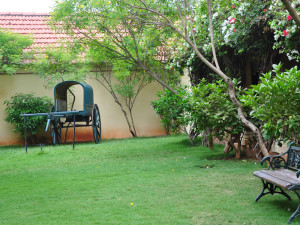
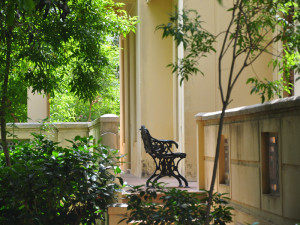
Thats a day in your life at Chettinad – An intoxicating mix of a history that dates back to the 19th century and a heritage that has been undeniably borrowed from a multitude of cultures. It is a fascinating blend of delicately carved temples, ancient mansions and delectable cuisine, an ode to an era gone by in ways more than one; crumbling buildings beautifully juxtaposed with restored mansions; where the old and the new intermingle, a visceral undefined longing to be a part of that heritage.
The region belongs to the Nattukottai Chettiars or the Nagarthars (meaning sophisticated and knowledgeable folk) who were a tradering community and considered to be the pioneers of modern banking systems. Their fledgling businesses and ingenuity took them across Burma, Singapore, Vietnam, Ceylon, Malaysia and Indonesia. It is through these trade relations that they brought back with them influences and knowledge from other regions, adapting them locally and giving Chettinad its rich heritage, whether it is the stunning architecture of the times or the flavourful cuisine.
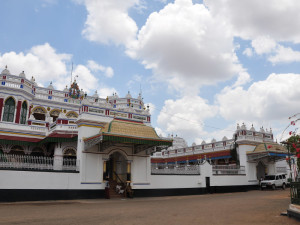
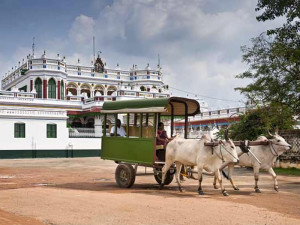
Deeply rooted in traditions, the Chettiyar Mansions stand testimony to the community’s belief in refined minimalism. They are vast and sprawling yet their execution is stunning and functional. It is a fine mix of South Indian designs with colonial architecture, embellished with elements such as Murano glass chandeliers, Belgian Mirrors, Italian marbles and art deco influences. The houses start with vast porches that open up to colonnaded courtyards leading up-to rows of rooms with extravagant facades. The large Chettiyar houses were reflective of the importance placed on the joint family structure housing close to 30 people under one roof; unimaginable in the times of nuclear families. The closeness of the family structure is even reflected by the fact that there would be marriages within the family to keep the family wealth maintained well within its confines.
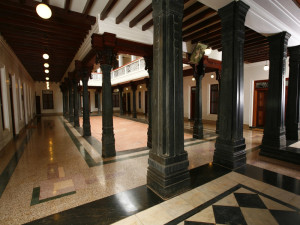
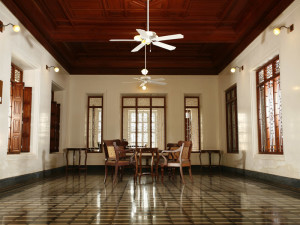
These values of simplicity and rootedness can also be witnessed in their lifestyle and rituals as well as the earthy Chettinad sarees. Usually hued in oranges, reds and browns, checked patterns and borders are typical of its look.
And quite obviously, the reference to any lifestyle would be incomplete without delving deep into the food that dominates it. The Chettinad hospitality is legendary and the feasts, a gourmet delight worth taking back. A spicy cuisine, made so by the liberal use of black peppers of the region, the inherited sense of thrift and economy is adopted to the food of the region as well. The preparations are simple, yet the flavours and the aroma is a defining aspect. Apart from pepper, the regional cuisine has borrowed from its trade relations. Imaginative use of spices such as star anise, tamarind and dried meats has been heavily borrowed from a South Asian influence. The original Chettinad fare was a vegetarian dominated one and the important festive meals are still so. A wedding lunch usually consists of six grains, nine savoury dishes and six sweets. The introduction of chicken, lamb and seafood has a lot to do with the intermingling of these cultures. We all know about the ever famous Chettinad chicken. Rice is a mainstay of the cuisine with dishes ranging from pongal, dosais, appams, adais, idlis and a sweet sticky rice pudding adapted from Burma.
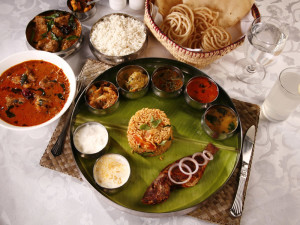
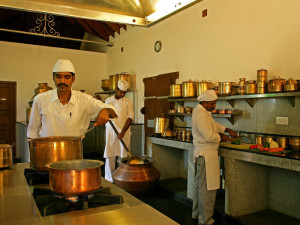
Here is a home-grown recipe for the ever fames Chettinad Chicken to entice you with some flavours that are the mainstay of the cuisine:
Ingredients
- Chicken-750 gms
- Small onion 30 or big onion 2
- Tomatoes-2
- Garlic 20 pods
To grind No1
- Ginger ½ inch piece
- Small onion-10
- Garlic-10 pods
- Green chillies-2
- Chillie powder-1 table spoons
- Coriander powder-2 table spoons
To grind No2
- Coconut grated-5 table spoons
- Cashew nut-5 or kasa kasa-2 teaspoons
- Fennel seeds-1 teaspoon
To season
- Cinnamon-2 pieces
- Fennel seeds-1 teaspoon
- Clove-2
- Cardamom-2
- Birinji leaf-little
- Mint leaf-handful
- Curry leaf little
To marinate
- 1 teaspoon kuzhambu milagai thool(the powder used for sambar)
- Salt-1 teaspoon
- Curd little
- Ginger garlic paste-1 teaspoon
Procedure
- Mince the onion, garlic and tomatoes.
- Keep the kadai in the stove. Season the curry with the items given in ‘to season’ in 2 tablespoons of oil.
- Add the onions and saute with a pinch of salt for 3 minutes.
- When the onions turn transparent add the garlic, sauté for some time
- Add the chopped tomatoes. Sauté till the whole thing gets smashed.
- Add the grinded paste of items given in No 1. Sauté it for a while.
- Now add the chicken pieces and nicely mix all the masala over the chicken pieces.
- You can see lot of water coming out of the chicken. Reduce the flame and cook for 10 to 15 minutes.
- Once you find that the chicken pieces are almost cooked increase the flame so that the gravy becomes thick.
- Once the curry gets thick add the masala grinded with the items given in No2 and mix nicely
- Cook for another 5 minutes.
If you need the curry to be little watery add the masala little earlier and switch off when the curry is in the desired consistency.
The curry should be cooked till the oil seperates.
Do share with us if you have your own recipe of Chettinad Chicken. If not recipe for chicken, interesting stories would do too!, We would love to hear about those in the comments below: